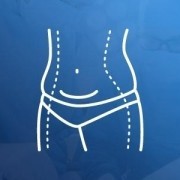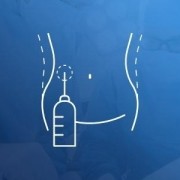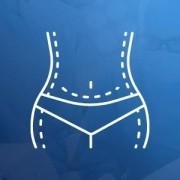Different Types of Liposuction
If you are to get a liposuction surgery with an eye to get rid of the excess fat you have in your body, you may be wondering which procedure or type that your surgeon will go for.
As you may now, liposuction comes in a variety of forms. Each functions slightly differently and has different benefits and drawbacks. Understanding the distinctions between them will enable you to make the best choice for your own body.
Liposuction with Suction
This is the most common and oldest type of liposuction. Small incisions are made over the area to be suctioned in this method of liposuction. To suck away fat cells, a hollow needle called a cannula is introduced through these incisions. On the other hand, this surgery can take 1-3 months to recover from, depending on the nature of the procedure and how quickly you recuperate.
Furthermore, it can take three to six months for your shape to be finalized. However, most patients who undergo liposuction recovery are able to resume their typical activities within a few days. And also, this liposuction type can be utilized on a range of body parts, including the bottom, thighs, legs, abdomen, back, and arms. Because it is one of the less accurate types of liposuction, most people do not utilize it for small places such as beneath their chin.
The biggest advantage of this type of liposuction is that it is the least expensive. Furthermore, it has been used for a long time and is a “tried and true” method that many physicians are familiar with.
Tumescent Liposuction
Tumescent liposuction is similar to regular liposuction in that lidocaine and epinephrine are used to swell fat, making it easier to locate and remove. Lidocaine is a strong anesthetic that can also cause modest edema in fat cells. Additionally, epinephrine is commonly used since it constricts blood vessels and can significantly reduce bleeding.
Anesthetic is injected into fat pockets, causing them to enlarge. The fat cells are then removed using a short needle called a cannula linked to a suction device. Tumescent liposuction can be utilized on practically any portion of the body where liposuction is regularly employed. The majority of the swelling and pain associated with this operation will subside in about a month. However, as with traditional lipo, it may take 3-6 months to see your ultimate, trim shape.
One of the primary benefits of tumescent lipo is that it causes less bleeding and bruising. Furthermore, it is one of the more affordable solutions for fat removal. This is often regarded as the gold standard in liposuction operations. However, it lacks some of the technological advances and benefits of other systems.
UAL- Ultrasound Assisted Liposuction
Ultrasound employs high-frequency sound waves that can generate large amounts of energy in the tissues on which they are focused. This has the potential to breakdown fat cells, making suction removal easier. So, ultrasound-assisted liposuction is frequently employed in locations with harder fat, such as the male chest, back, or saddlebags, and other areas where standard liposuction may be problematic.
On the other hand, the recovery time is similar to that of tumescent liposuction, albeit some people may develop scorching or burns.
Furthermore, one of the primary benefits of ultrasound-assisted liposuction is that it can remove fibrous or otherwise recalcitrant fat that would normally take multiple procedures. And also, because it is liquefied and less likely to bruise or bleed, so, this method of liposuction can safely remove a bigger volume of fat.
There are a few drawbacks as well. Because ultrasound emits high-energy rays, there is a greater risk of getting blisters and burns. There is also a greater risk of numbness and the formation of tiny blood clots. Nonetheless, many people believe that this sort of liposuction is the best option for them.
Laser Liposuction
Laser liposuction is comparable to ultrasound-assisted liposuction in that fat is broken down using a laser. A laser probe is introduced through the suction cannula in this process. To control pain and bleeding, anesthetic and epinephrine are administered into the region. Following that, the plastic surgeon makes many small incisions and inserts the cannula and laser probe. Since lasers efficiently break down fat, it can be easily removed as a liquid oil through the cannula. The body absorbs any liquid fat that is not suctioned. It takes around a month to recuperate from ultrasound-assisted liposuction.
To sum up, there are mainly four types of liposuction, and your surgeon will decide on which way to go for depending on your needs and overall situation.
References:
https://www.americanboardcosmeticsurgery.org/procedure-learning-center/body/liposuction-guide/
https://medlineplus.gov/ency/article/002985.htm







